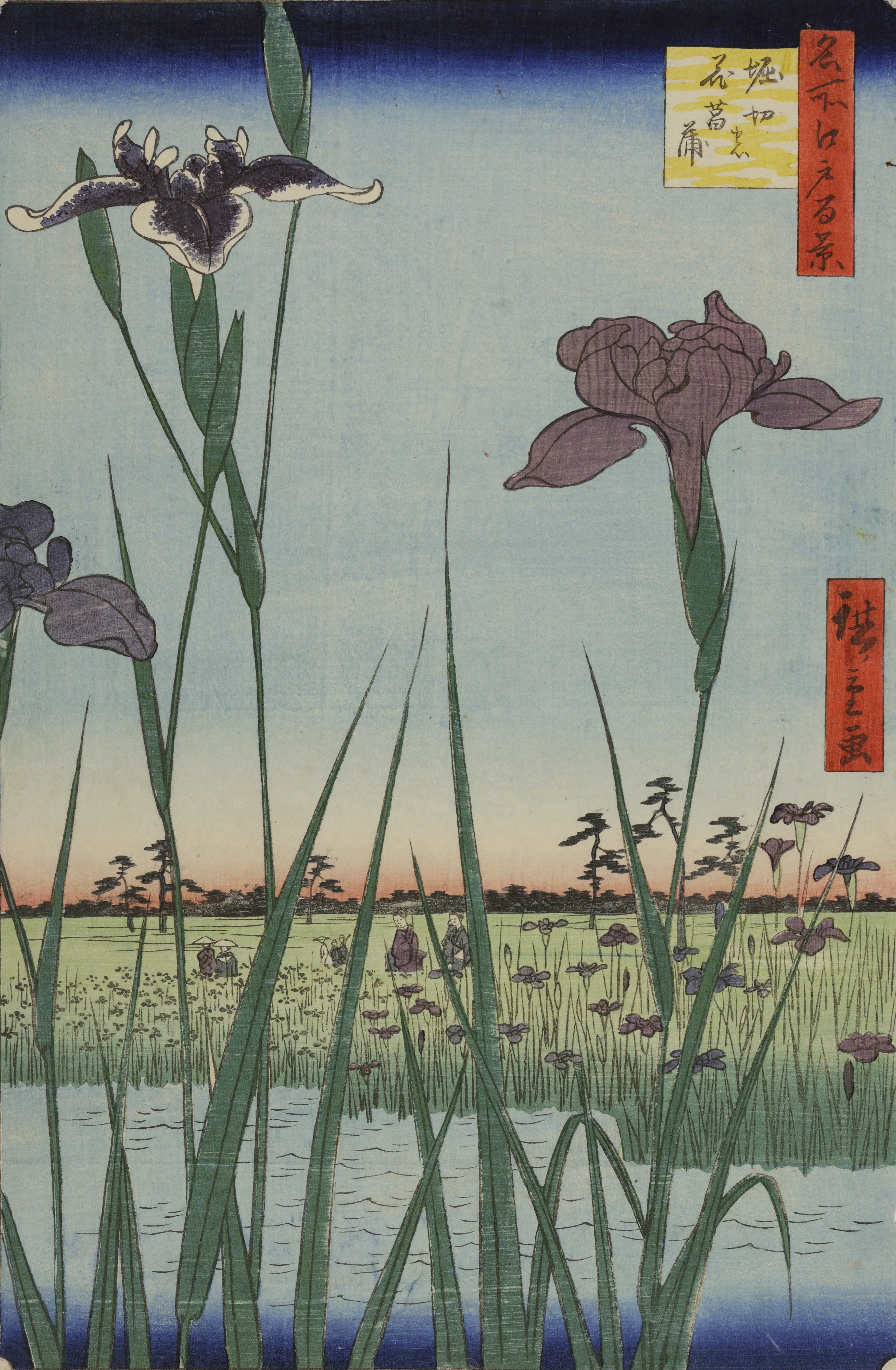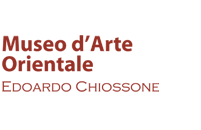
Click here to view image
Utagawa Hiroshige, Japan, Edo period (1603-1868)
Polychrome woodprint
Nishikie polychrome woodprint, ink and colours on paper. Vertical Ōban, 36.2 x 24.8 cm
The iris hanashobu (花菖蒲) grows in a humid soil close to streams and ponds, it has a wide variety of colours and is characterized by a yellow streak. During the Edo period, this type of iris became very popular and it was cultivated in more and more gardens; in the capital Edo (present-day Tōkyō) it became fashionable to visit these gardens and iris fields as a form of entertainment during the summer evenings, to enjoy the coolness of these green areas far from the city centre. Among these gardens, the Shōbuen of Horikiri (堀 切 菖 蒲 園), still visited and much loved by Japanese people, became the most popular. Here the irises were cultivated specifically to be sold at the Edo market.
In this print, datable 1857, part of the series "One Hundred Views of Famous Places in Edo" (Meisho Edo hyakkei 名 所 江 戸 百 景) Hiroshige portrays this very garden, and, with a clever game of overlaps, manages to concentrate in a single work two types of prints, landscape and kachōga (flowers and birds). In the foreground are indeed portrayed with extreme accuracy three varieties of hanashōbu, while in the distance we glimpse girls who came from the city to the garden to enjoy the beauty of flowers and the evening breeze, as suggested by the red horizon indicating the sunset.




